There are many ways to make your survival food more delicious and varied. For instance, you can add various spices or herbs to it. Moreover, you can easily grow many of them right on your windowsill. Today we will talk about basil, one of the most beloved herbs. Its bright smell and taste can garnish almost any dish, and with fresh pesto, you can even eat a shoe (but better not).
It is easy to grow your own basil on the deck. You do not also have to worry about pests that can ruin your crop.
A Bit of Theory
Your knowledge and survival skills might save your life one day! As food is so essential, the cooking methods, as well as the opportunities to grow certain products should be necessary for survivalists, preppers, and homesteaders. Sure enough, your gear is of the essence, as well.
Basil comes to Mediterranean cuisine from South Asia. It is also widespread in the South Pacific Islands. It is an annual plant in the mint family.
The benefits of basil are its bright taste and smell, as well as its rapid growth. That is why all gardeners love it so much, and it is a great herb for beginner gardeners. Usually, it takes about 3-4 weeks to get fresh basil from the seed. If you want to grow basil massively you should consider building Walipini greenhouse.
Basil types
We have a surprise for those who think that there are only one or two basil types. There are a lot of them! Here are just the most popular ones:
- Purple basil is not as aromatic as its relatives, but it is one of the most beautiful. One of the best ways to decorate your dish.
- Spicy globe basil can be the best container gardening solution. It has small leaves, but it smells great.
- Sweet basil is perhaps the most common type of this herb. Sweet basil has medium-sized green leaves.
- Green ruffles basil works well for salads. It has beautiful leaves that will serve as a flavored seasoning and a great decoration for your table.
- Sweet Thai basil has pointed leaves with a special aroma. This sweet basil is often used for frying, as it retains its pleasant smell even at high temperatures.
- Lemon basil is most often used to make sauces, desserts, pickles, and even brewing tea. It cannot be confused with other species due to the citrus aroma of this flavorful herb.
You don’t need to dwell on just one type — more basil is better! Grow as much as you can to mix it into your dishes and come up with more and more recipes.
Growing Basil from Seed
Growing basil from seeds is the most popular method among gardeners. However, you can grow basil plants right in the pot at home. Its versatility allows you to grow it both outdoors and indoors. To grow basil indoors, you need to adhere to the same conditions, and it will take four to eight weeks.
Do Not Forget About Pruning
Your goal is to grow bushy basil plants with lots of leaves. The leaves are the basis of all those delicious basil dishes that we love. For basil to grow like this, you need to constantly pinch it to the next place, where there are two basil leaves sprouting.
Don’t start pruning too early. Wait for the basil to grow to 6 inches. After that, you can do this 2-3 times a week.
It is important to note that pinching is best done in the evening if it is hot outside. This will make it easier for the plant to adapt.
Planting Basil from Seed
If you can’t plant basil in your garden, you can grow it indoors as well. You don’t have to wait for the spring’s last frost to end so that you can start the whole process early.
You don’t need a lot of tools to grow basil, just like you don’t in the case with chia sprouts:
- Large pot or pots
- Seed starting mix
- Spray mister
- Starting container with a plastic dome
- And of course basil seeds
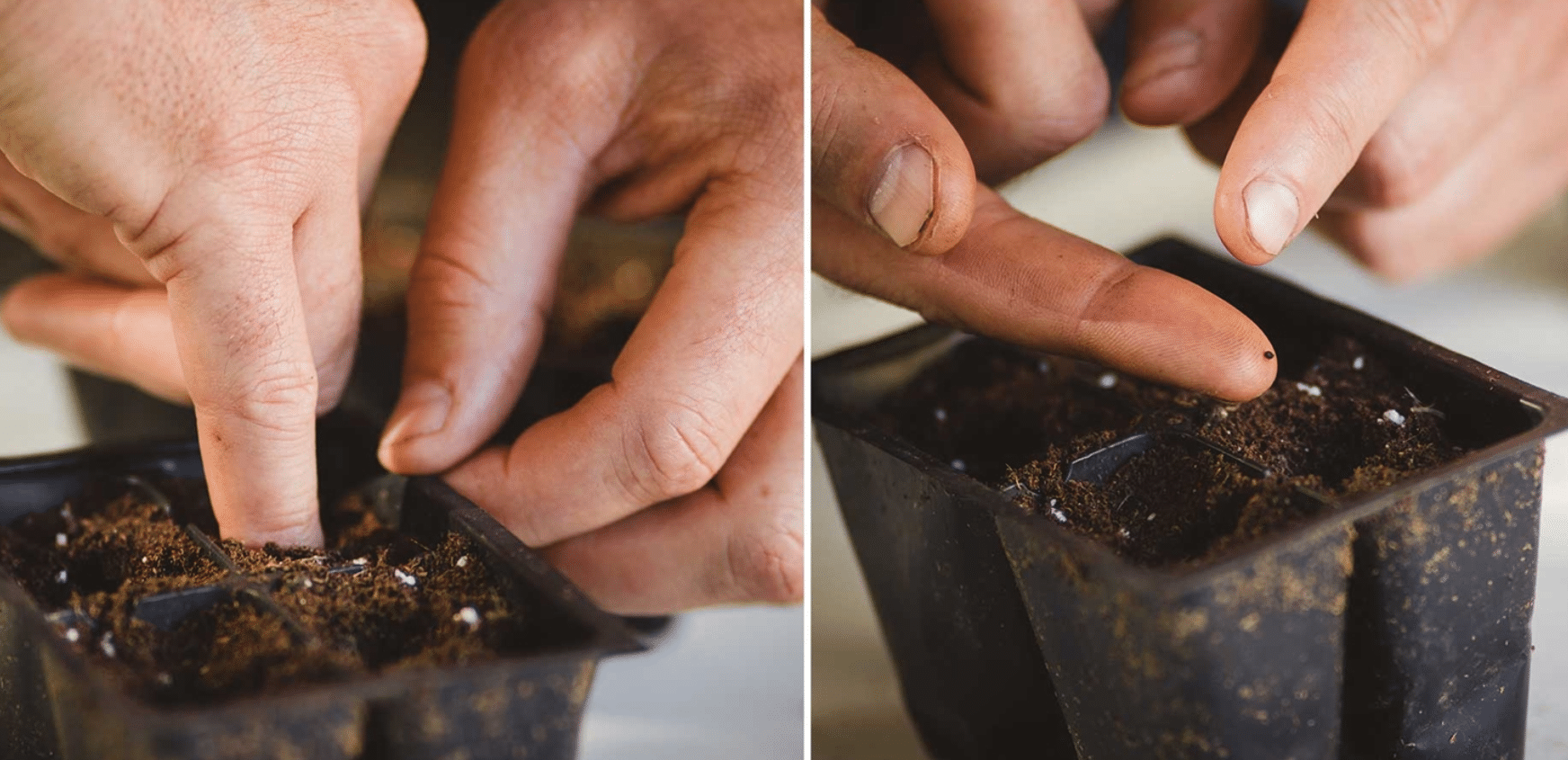
We will give you step-by-step instructions on what you need to do to get basil plants.
1. Prepare Starter Pots
Moisten the starter mix slightly. Then manually add this to the pots. Fill approximately 0.5-1 inch below the top of the container.
2. Put the Basil Seeds
Place the plant seeds in the center of the pot. It is always best to put in a few, as this will increase your chances of getting a good harvest. Expect not all seeds to sprout. Some will remain in the soil. It happens, and nothing can be done about it. Therefore, it is best to put a few seeds in each pot.
3. Cover the Seeds
Then you need to add the dry starter mix. Sprinkle it directly on top of the seeds so that they are about 1/4 inch covered.
4. Moisten the soil
It is necessary to ensure contact between soil and seeds. To do this, you need to moisten the soil with water. You can use a small spray bottle or do it with your hand. Be careful not to overflow the water.
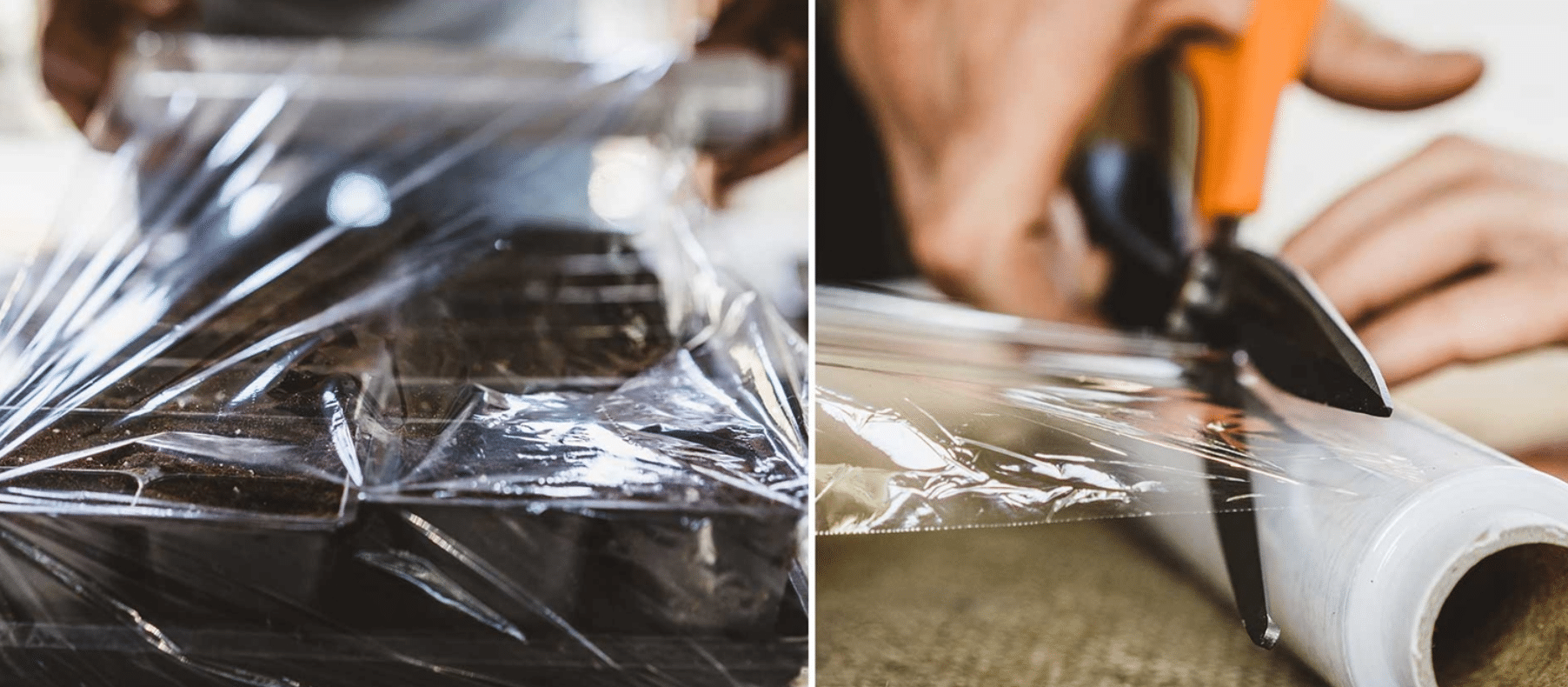
5. Keep Humidity
You need to keep your basil in moist soil. To do this, you can stretch plastic wrap on top of the pot or use a plastic starting container that has a special plastic dome. You need to maintain a moist growing environment.
6. Put in a Warm Place
Move your basil pot to a warm place. You need about 70 degrees. Don’t water the basil until your seeds come out.
7. Wait for the Seedlings
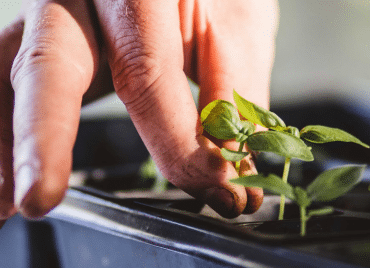
Move the pot to a sunny spot. Now you need to self-monitor the moisture, keep the soil moist and spray with water frequently.
Now you must choose the strongest seedling. Without touching the roots, pinch off other seedlings.
8. Transplant Basil Seedlings
After the basil plants have 3 pairs of leaves, you will need to transplant them into pots. Take the ones that are 3-4 inches in diameter. You can help your plants a little and add a mild fertilizer solution.
9. Move Basil Outdoors
Wait for a more stable warm weather outside, somewhere around 70 degrees. And after that, gradually move your basil plants to the garden. This will help the plants grow stronger.
Other Plant Care Tips
Besides the constant pruning of basil leaves, there are a few more tricks that will help you, so your growing basil will only bring you pleasure and a great harvest.
1. Fertilize Only Lightly
Do not get carried away with fertilizers, and they can spoil the smell of the plant. You just need to add fertilizer twice a season, no more if you grow basil outdoors. If your basil grows inside, you can use a weak organic fertilizer solution every 3-4 weeks. This will help keep the nutrient levels in order as they can be washed out.
2. Avoid Bolting
Provide shade to your young plants and keep the soil moist. This will help avoid “going to seed.” It is also a good way to pinch off flowering stems. Do this 1 inch below the flower.
3. Water Regularly
This plant loves moisture, so it should not be overdried. Watch out for plants grown in containers especially. Their soil dries out more often, so water often. This is best done early in the morning.
On average, you need to water about once a week. It takes about 2.5 cm of water to moisturize the soil and plant roots.
4. Plant Companions
Companion planting is the secret tip of many gardeners. Basil is said to grow better when planted with other plants such as tomatoes, peppers, or oregano. This planting together improves the taste of the plants. Or at least you can use basil for tomato dishes.
How to Move the Basil to the Garden
So it is time to move your basil plants to the garden. We will again describe the whole process in detail, so you do not have any difficulties.
1. Select Location
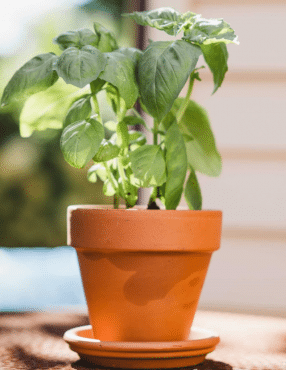
2. Make Well-Drained Soil
Well-drained soil is the basis for the growth of healthy plants. Add plenty of organic matter to the soil. For the basil roots to grow well, use a container or garden bed about 8 inches deep or more.
3. Place the Basil Plant
Place the plants so that each has plenty of sunshine and sufficient air circulation. You need to plant them about 12-16 inches apart.
4. Dig a hole

5. Place the Basil
Place the seedling in the hole. Keep the root ball flush with the well-drained soil. Press down firmly with your hands.
6. Water the Basil Plant
Moisten the plant well. Also, you can use weed control to help basil growing.
When It’s Time to Harvest Basil
Harvesting basil does not usually occur at any particular time. More often than not, you just pick up a few leaves when you need to add them to a particular dish. That being said, harvesting basil will help you make your plant lusher and less long.
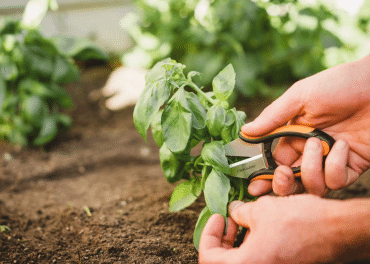
Here are some tips on this subject:
- Do it regularly: Harvest basil throughout the growing season to stimulate growth. Even if you don’t need fresh leaves now, you can freeze them. Just add olive oil and place it in the freezer. In winter, you will enjoy this delicious herb. It is best to remove about 1/3 of all leaves from the plant monthly.
- Snip the stem: When harvesting basil, snip the stem just above the point where the two leaves are held together. Use good scissors to keep the cuts neat. For instance, you can take these herb snips. This product is specifically designed for this purpose and is very easy to use.
The next step is storing your harvest properly. Read the article on survivalist food storage on our website.
Frequently Asked Questions (FAQ)
Is it better to grow basil inside or outside?
Basil plants grow equally well in the garden and on a sunny windowsill. To get fresh basil, even when last spring frost is still here, you can grow potted plants. This will require more frequent watering, and you also need to make sure the basil plant gets enough sun. Basil thrives in a warm sunny place, so provide it with a sunny window. To grow a bushy plant, don’t forget to prune it.
Does basil prefer full sun or shade?
Basil grows in a sunny environment. How much sun does the basil plant need? About 6-8 hours a day. But be careful; if the sun is too hot during the day, you need to organize a shade for the plant. Also, don’t forget about watering, don’t air dry basil. Watering is best in the morning when the sun is not too warm. But do not overfill the plant. Otherwise, you will have root rot.
How to care for greek basil?
Greek basil is a popular herb for savory dishes. It doesn’t take a lot of effort to grow your own basil. Care must be taken to ensure that the potting soil is well hydrated and that the plants have enough sun. Frequent fertilization is not required or even not recommended, as this can spoil the plant’s smell. You can grow this in the garden and bring it indoors when it gets cold. But after the last frost date is over, you can transfer the plants to the garden again.


